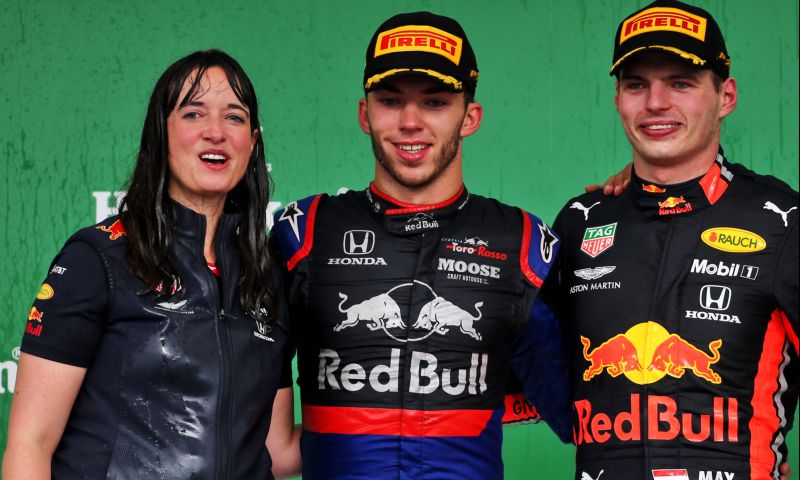One of the women behind Verstappen's success: 'Like a ball game'
F1 News

She is possibly one of the key people behind Max Verstappen's success: Hannah Schmitz. The Chief Strategist at Red Bull has on several occasions been able to help the Dutchman win a Grand Prix by plotting the perfect strategy. In the podcast Talking Bulls , she talks about working at Red Bull.
Schmitz holds a very important position within the Red Bull team. The chief strategist is responsible for making tactical and bold decisions during races. These are things she was not able to learn through a study, she says. "There definitely isn’t (a degree in race strategy)," she says, laughing. "It is about problem solving, enjoying that kind of strategic way of thinking."
After several peeks into Red Bull and befriending several colleagues, she began to understand the job better. "What I like about strategy you have to know a lot about everything that’s going on and take all of this information in, then decide what that means for the picture and make the decisions," says Schmitz. It is not an easy job, after all, nothing is as changeable as a Formula 1 race. "You have always got to be adaptable and change your decisions. For me, it’s the time where I’m most calm, because of there’s so much adrenaline in that like responsibility, this is your job, that’s the thing you are here to do."
Collaborating with drivers
She compares her job to playing a ball game:"It is just that the results really matter," laughed the Red Bull woman. "The drivers aren’t necessary pieces as well, that you can always make move the way you want to, so it’s about understanding the limitations of the car and always managing risk, really. So it’s never a right and never a wrong answer." According to Schmitz, there is much more involved than simply calculating a formula, because you not only have the data, but also the opinions of others and even more: "What’s the weather doing, what’s this person’s opinion, what’s the driver is feeling."
It regularly happens that the data does not match the driver's feeling, confirms the chief strategist."Sometimes two types of tyres look the same in the data, but a driver feels better on a particular tyre or thinks he can be faster in traffic with it. Despite then thinking it's slower, I have to listen to that."
But the roles are also often reversed, then Schmitz tells Verstappen and Perez what to do:"For example on paper, two tyre compounds might look really similar, in terms of lap time and grip, but the driver will just say ‘I feel like way better on this tyre and I can push more in traffic and I know it might be a little bit slower, for me that’s better’ than you would obviously take that opinion on board. If the driver is saying ‘I definitely can’t do a stint of 20 laps on that tyre,’ you know from your data that you can, and that’s they need to try to do in order for you to win the race. It might not be the easiest way, but that’s what we need to do, then you would communicate that to them."

